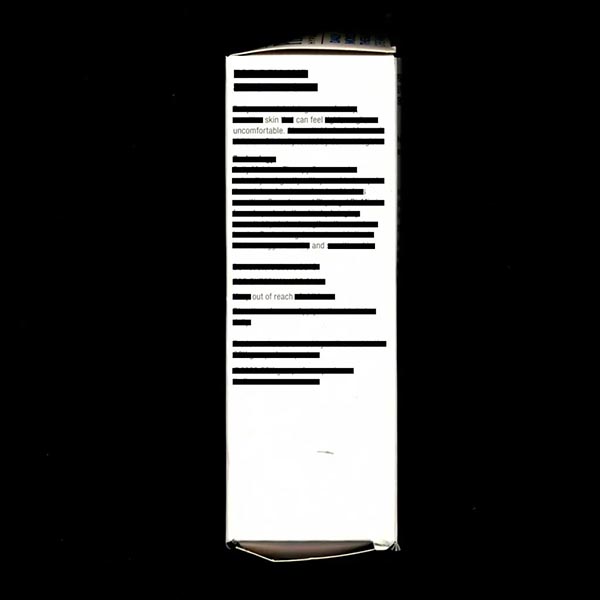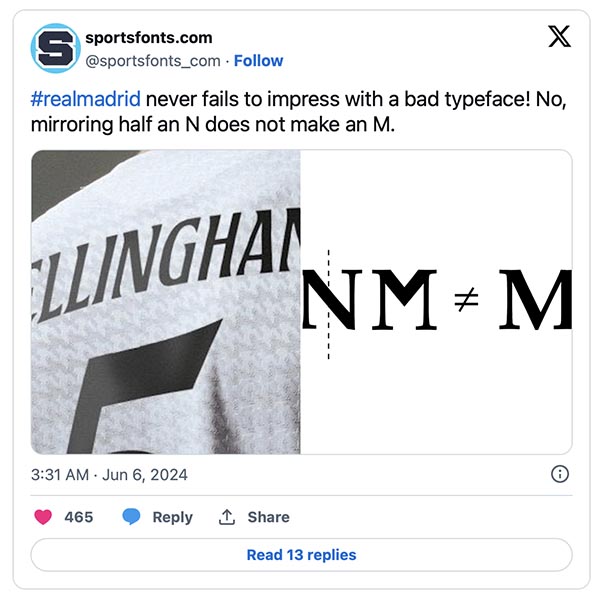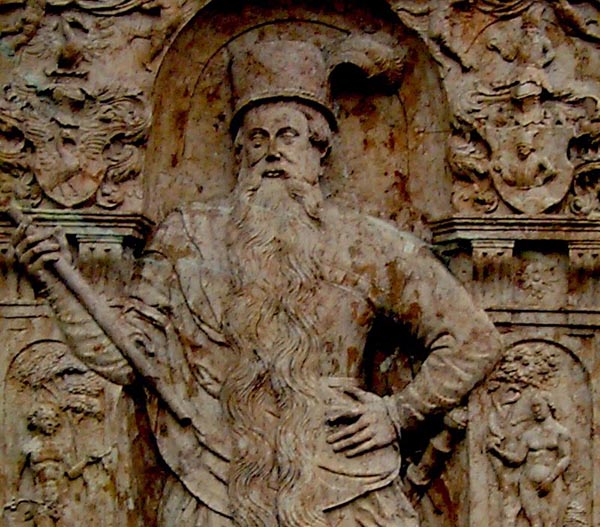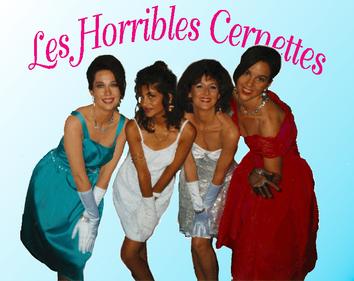
Signs of the Times, Part the Ongoing: Blessed Are the Signmakers
If you have ever driven in Los Angeles, you may have had the misfortune to take the 110 freeway in downtown LA and—worse—have to merge onto another freeway, which can often require shooting across four lanes of traffic in about 30 feet. Or, if you were trying to get to the 5 north, having amazingly bad signage. If you were driving in LA in the late 90s, for example, you could easily miss your exit and, since this was way before GPS, had to try to refer to the printed Thomas Guide that was every Angeleno’s bible to get back on course.
So in 2001, via Laughing Squid, one renegade street artist and former signmaker named Richard Ankrom decided enough was enough and decided to surreptitiously correct the street sign. Specifically, if you were on the 110 north, a crucial sign neglected to mention that in a few feet was a left-lane exit to the 5 north. As the video below explains, the 110 freeway* was built long before LA had the volume of traffic it has now, opening in 1940 as the Arroyo Seco Parkway. It was designed for 40 mph speeds (ha!), lacked shoulders, and ample merging room, and some exits were 90-degree turns. And as it was built along a river, there was no room to expand the freeway as traffic volume increased. And the 110 runs right through the heart of downtown LA and four other major freeways intersect with it in the space of about four miles. This is why it is such a nightmare.
Anyway, back to the sign. Ankrom, having been a professional signmaker, accurately copied the freeway signage specs, even taking measurements to make sure lettering was the right height and distance from the edges and the interstate symbol had the correct Pantone colors. (Nowadays, a number of wide-format equipment vendors offer official road signage kits but back then it all needed to be done by hand.)

It was so professionally done that it took months for CalTrans to notice—and when they did they realized he was correct and left it in place. Some years later, when they replaced the whole sign, they included his correction.
Although today GPS has replaced signs for some people (but not everyone!), accurate freeway signage is still vitally important.
*Yes, LA freeway numbers are always given the definite article, so it is “the 110.” You can always tell when a TV or movie screenwriter has lived in LA too long when characters refer to freeways in other parts of the country in a similar fashion. You would never say “the 90” in New York or Massachusetts, for example.
Redact of Love
Via Print magazine, an interesting combination of poetry and packaging.
In Hidden Poems, strategist and designer Stuti Sukhani takes all the single-use items that surround her in an attempt to uncover the verse that lies in the rigamarole of this packaging. Using blackout poetry, she plays with the words that the items offer to tell small yet sticky stories, sometimes aided by imagery. She seeks to increase the psychological lifespan of a one-time-use object to find the meaning it can hold.
So a box of staples can be a life affirmation:

A box of skin cream can reflect an existential dilemma:

And so on. Try it yourself with the packaging lying around your home or office.
Type of Clothing
Print magazine asks, “Why is soccer jersey typography so bad?”
While logos, crests, and sponsors emblazon the front of jerseys, players’ numbers and last names are featured on the back. But all too often the type used on the backs of jerseys lacks legibility and the same level of thought and care incorporated into other aspects of the jersey’s design. Sports type designer and expert on the subject, Christoph Koeberlin, has fixated on this design deficiency, spending much of his career creating effective sports typography to fill the gap.

Koeberlin launched his website Sportsfonts almost a decade ago as part of his mission to bring better type options to sports jerseys, and raise awareness around this prevalent issue. With the 2024 European Championships currently underway in Germany, the Copa America playing out in the US, and the Olympics nearly upon us in Paris, the sea of soccer kits is overflowing, with examples of good and bad typography abound.
Koeberlin cites two main reasons for bad jersey typography: an emphasis on style to the detriment of legibility, and the fact that it’s rarely actual type designers who create the jersey typefaces, so there’s a lack of a professional eye double-checking things.
Part of the Machine
We confess that certain of our WhatTheyThink contributors had a brief mid-2000s obsession with inventor and futurist Ray Kurzweil, whose 2005 book The Singularity is Near was highly influential in the pre-Around the Web bunker. The book’s subtitle is “When Humans Transcend Biology” and was largely about artificial intelligence. He had been conspicuously absent from all the recent brouhaha over AI—until a recent NY Times article, in which he says that he has plans to merge with AI and live indefinitely. (He apparently released a sequel called “The Singularity Is Nearer” which we had not known about. (Back in a minute…have to run to Barnes & Noble.)
He has long said he plans to experience the Singularity, merge with A.I. and, in this way, live indefinitely. But if the Singularity arrives in 2045, as he claims it will, there is no guarantee he will be alive to see it.
…But his prediction is not quite as outlandish as it seemed in 2005. The success of the chatbot ChatGPT and similar technologies has encouraged many prominent computer scientists, Silicon Valley executives and venture capitalists to make extravagant predictions about the future of A.I. and how it will alter the course of humanity.
Ah, but the devil’s in the details, innit?
The big leap, of course, is imagining how human consciousness would merge with a machine, and people like Mr. Kurzweil struggle to explain how exactly this would happen.
This kind of sounds terrifying:
He has long predicted that advances in A.I. and nanotechnology, which could alter the microscopic mechanisms that control the way our bodies behave and the diseases that afflict them, will push back against the inevitability of death. Soon, he said, these technologies will extend lives at a faster rate than people age, eventually reaching an “escape velocity” that allows people to extend their lives indefinitely.
Or get hacked, or contract a computer virus, or have autocorrect start rewriting our genetic code.
Graphene Goes to India
Was it a good week for graphene news? It’s always a good week for graphene news! Indian government finances graphene-based e-textile projects. From (who else?) Graphene-Info:
One of these projects aims to develop graphene-Based smart & e-textiles for multifunctional wearable applications. Alohatech has been granted funding for this project, which will focus on developing conductive yarn and fabric-making processes using graphene nanomaterials and conductive inks.
The outcome is hoped to be advanced nanocomposite materials-based E-textiles utilizing the inherent advantages for practical clothing applications.
Capping it Off
Whilst in Germany for drupa, we couldn’t help noticing one newish trend: tethered caps on soda bottles. Indeed, recent EU legislation requires that all plastic bottles (up to 3 liters) utilize tethered cap designs. For a couple of reasons. First, for ages, bottle caps and plastic bottles were made of different kinds of plastic, and the bottles were recyclable but the caps were not. That changed and now both can be recycled simultaneously, and the tethered cap is designed to get people to adjust to the new reality. Second, it was also designed to help minimize bottle cap pollution.
The downside is that the predominant tethered cap design makes it hard to drink from the bottle without poking you in the eye. So you just end up tearing off the cap anyway.

Core77 finds this to be a design problem and not a user problem. So Swiss packaging company Corvaglia has come up with a better design. In the image below, it's the one on the right:

As you can see, the cap and hinge is designed to “park” the cap against the shoulder of the bottle, keeping it out of the way.
Of course, it would be nice to avoid plastic bottles entirely.
The Sound of Silence
If you have ever shopped at an Aldi, you may have noticed one store feature that distinguishes it from other supermarket chains: there is no music. Via Food & Wine, there is a deliberate reason for that.
As a spokesperson for the stores shared with Southern Living in March, “No detail is overlooked in Aldi stores when it comes to saving money for our customers, and that includes our decision not to play music … We’re committed to passing every cent of savings on to Aldi shoppers, whether that’s through our quarter cart system or our Aldi exclusive brands, and so when we realized we could save even more on music licensing costs, it was a no-brainer.”
Which makes one wonder why other chains don’t cut costs in the same way. Nothing is not done deliberately in big retail environments.
Progressive Grocer reported in 2023, music can have a profound psychological effect on shopping behavior, making us trust a place and spend more money at the same time.
“Say a grocery chain is known for being organic and trustworthy but still progressive and modern. We can help them interpret what those brand characteristics mean in music, using data from our data universe,” Ola Sars, the founder of Soundtrack Your Brand, which licenses more than 100 million stores for use in grocery stores, shared with the publication. According to Sars, music has the potential to lift sales by upward of 10%.
We suppose they have ample data for this, but honestly we rarely notice what music is playing unless it’s something dreadful.
Calling Zefram Cochrane
If you are a hard core Star Trek fan, you have likely seen the 1996 film Star Trek: First Contact, where Picard’s Enterprise travels back in time to 2063 to witness the launch of the very first spacecraft with a warp drive.
Ever since it was introduced in the original series, the idea of a “warp drive” was long held to be something that could only exist in the realm of science fiction. But is it? Well, via The Debrief, scientists have actually been working on such a thing. A think tank called Applied Physics (AP) has been surreptitiously beavering away on a working warp drive and are about to publish a new series of papers.
Comprised of over 30 physicists and scientists in related disciplines, the AP team has gained a sizeable reputation in the warp theory community due to their highly regarded, peer-reviewed papers on numerous warp drive concepts. One of those concepts recently reported by The Debrief has gained significant attention, inspiring many researchers and scientists to declare the team’s “constant velocity warp drive model” as the first practical, viable warp drive concept ever proposed.
They stress that “the laws of physics allow for functional subluminal [slower than light] warp drives but not superluminal [faster than light] warp drives.” But they can approach light speed, which will shorten cosmic travel times significantly.
The idea was first proposed in the 1990s. Says AP in an interview in The Debrief:
significant progress has been made. Early ’90s models required non-existent exotic matter, which essentially shelved the science. Work in the ’90s and 2000s reduced the amount of exotic matter needed, but the models were relatively unchanged and thus always remained unphysical. It was only as recently as 2021 that new classes of warp drives came to light, culminating in the first physical warp solution, meaning it doesn’t use exotic matter.
There is even a space-race developing around warp drive technology and there is the potential for it to be used militarily (big surprise).
Since it’s so early, there is still much we don’t understand about warp drives to grasp their geopolitical impact fully. Could they have military applications? Possibly, yes, but until we can construct them, it’s unknown. At this stage, we should focus on further developing our understanding of what is possible in the field of warp mechanics. There is a lot of research to be done now that the field is physical, so that’s definitely the first step. If we one day achieve “micro warp” propulsion in a lab, it would certainly trigger serious defense spending, as no nation can ignore a new means of propulsion. However, we hope the research stays civil. It would be quite shameful to achieve such technical prowess only to throw rocks at warp speed when the technology can be used to stimulate GDP and explore new frontiers.
They may be on track to make a 2063 launch date.
Gamer On
You may or may not know that the Catholic Church is still canonizing saints. And, indeed, it is about to canonize the first “millennial” saint. Or, as one headline has it, “The Catholic Church Is About To Canonise Its First Gamer Saint.” He sounds like he deserves the honor:
[Carlo] Acutis was born in 1991 and died in 2006 at 15 years old from Leukaemia. He was born in London to Italian parents before moving to Milan, Italy for the remainder of his life, where he regularly volunteered to help the homeless and the poor with money saved from his weekly allowance.
And, yes, he was a gamer.
Acutis reportedly enjoyed playing video games including Halo (he probably really liked all the Prophets in-game), Mario, and Pokemon, and bought a PlayStation at eight years old – although his mother claims that he capped his game time to just one hour a week as he was wary of becoming addicted. He’s also known for his creation of a website which documented reports of Catholic miracles and Marian apparitions – an act that has led to him being nicknamed “God’s influencer.”
As for the requirement to have performed a miracle:
He reportedly healed a Brazilian boy with a birth defect that led to him being unable to consume food normally, when the boy’s mother prayed to Acutis for assistance. A second miracle has since been attributed to the gamer saint-to-be, with reports of a Costa Rican girl who was healed from significant head trauma after her mother prayed at Acutis’ tomb in Italy. Now that both miracles have been recognised by the Church, the first millennial saint has been approved for canonisation, and will likely be named a saint during the 2025 Jubilee.
It’s easy to make jokes, but he sounds like a good kid who was taken too soon. He would have loved Assassin’s Creed, what with all the running around and climbing up famous cathedrals.
Hairy Situation
Here’s a cautionary tale for certain members of the WhatTheyThink team. Via Atlas Obscura, meet Hans Steininger, a man who was killed by his own beard. No, not in a supernatural X Files kind of way, but more prosaically.
Hans Steininger was a 16th-century burgomaster (town mayor) of Braunau am Inn, a town neat the German-Austrian border. Interestingly, very little is known about him—except that he had a massive beard, said to be four-and-a-half feet long.
Steininger was a popular mayor, serving multiple terms, but in 1567, he met an ignominious end. On September 28 of that year, there was a large fire in the town that caused a general panic. Steininger usually kept his prodigious beard hair rolled up and stuffed in a pocket,
As one does.
but during the commotion he was running around with it hanging free. In the midst of the chaos, he managed to step on his own beard, sending him tumbling down a flight of stairs and breaking his neck. Killed by his own beard.
There is an epitaph for Steininger on the side of St. Stephan’s Church in Braunau am Inn—and more.
Over 450 years after Steininger’s death, his beard survives, currently on display at the District Museum Herzogsburg in Branau. The artifact has since been authenticated and chemically preserved so that future generations can continue to appreciate this sensational local story.

There is no indication that ZZ Top ever played there.
Wombat Walker
Tired of the printing industry? Looking for a change of pace, far from the madding print shop? Well, we have good news and bad news. The good news, via Boing Boing, is that Tourism Tasmania has a job opening for a wombat walker and it sounds delightful:
Coax them out of bed to get them moving; our wombats would sometimes rather have a sleep-in.
Encourage them with praise and pep talks, motivating them to complete their morning walks.
Guide and keep them on track; our wombats can be adventurous and sometimes wander off.
Ensure decorum and good behaviour. No chasing birds or distracting the other animals.
Keep them fuelled on the journey with their favourite snacks so they don't get puffed out.
There are other jobs at Tourism Tasmania:
Other perhaps less appealing odd jobs include Cave Conductor, where you make music in a cave with a local musician; Truffle Snuffler, which is working with a truffle-sniffing dog to root out the prized fungus; and Puffer Nut, which involves trains, not fish.
The bad news: you need to be an Australian resident. Though, to be honest, that may not be a dealbreaker.
Shake it Up
Do you like Shake Shack? Couch cushions? If so, then good news! Via (who else?) Food & Wine, Shake Shack is partnering with Bearaby, a sustainable home wellness brand, to develop a Crinkle Cut Cuddler:
a french fry-shaped body pillow used for side sleeping, joint support, as a pregnancy pillow, or just for those who like to have something to snuggle when lounging around the house. And don't worry if you use it every day. The 42-inch pillow comes with a washable french fry yellow cover and takeout box-inspired packaging so you can store it away, and it is made of Bearaby's signature all-natural, organic MelofoamTM for an ultra-soft feel.

And if you spill ketchup on it, all the better!
A real missed opportunity would have been for Shake Shack to partner with Radio Shack and develop a hamburger that also functions as a tape recorder.
This Week in Printing, Publishing, and Media History
July 15
1606: Dutch painter and etcher Rembrandt van Rijn born.
1779: American author, poet, and educator Clement Clarke Moore born.
1799: The Rosetta Stone is found in the Egyptian village of Rosetta by French Captain Pierre-François Bouchard during Napoleon's Egyptian Campaign.
1930: Algerian-French philosopher and academic Jacques Derrida born.
1947: American singer-songwriter and musician Roky Erickson born.
1956: English singer-songwriter and guitarist Ian Curtis born.
2003: AOL Time Warner disbands Netscape. The Mozilla Foundation is established on the same day.
2006: Twitter is launched.
July 16
1661: The first banknotes in Europe are issued by the Swedish bank Stockholms Banco.
1862: American journalist and activist Ida B. Wells born.
1907: American farmer and businessman Orville Redenbacher popped out.
1935: The world’s first parking meter is installed in Oklahoma City, Oklahoma.
1956: American playwright and screenwriter Tony Kushner born.
1969: Apollo 11, the first mission to land astronauts on the Moon, is launched from the Kennedy Space Center at Cape Kennedy, Fla.
In 2019, CBS News livestreamed the Apollo 11 launch on its YouTube channel:
July 17
1717: King George I of Great Britain sails down the River Thames with a barge of 50 musicians, where George Frideric Handel’s Water Music is premiered.
1889: American lawyer, author, and creator of Perry Mason Erle Stanley Gardner born.
1902: Willis Carrier creates the first air conditioner in Buffalo, N.Y.
1954: American author, screenwriter, and producer J. Michael Straczynski born.
1955: Disneyland is dedicated and opened by Walt Disney in Anaheim, Calif.
2001: American publisher Katharine Graham dies (b. 1917).
2006: American crime novelist Mickey Spillane dies (b. 1918).
July 18
1811: English author and poet William Makepeace Thackeray born.
1817: English novelist Jane Austen dies (b. 1775).
1906: American director, playwright, and screenwriter Clifford Odets born.
1937: American journalist and author Hunter S. Thompson born.
1968: Intel is founded in Mountain View, Calif.
1992: A picture of Les Horribles Cernettes was taken, which became the first ever photo posted to the World Wide Web.

July 19
1834: French painter, sculptor, and illustrator Edgar Degas born.
1868: American “singer” and educator Florence Foster Jenkins born.
1947: English singer-songwriter and guitarist (Queen) and astrophysicist Brian May born.
1977: The world’s first Global Positioning System (GPS) signal was transmitted from Navigation Technology Satellite 2 (NTS-2) and received at Rockwell Collins in Cedar Rapids, Iowa, at 12:41 a.m. Eastern time (ET).
1983: The first three-dimensional reconstruction of a human head in a CT is published.
July 20
1822: Give peas a chance—Austro-German monk, geneticist, and botanist Gregor Mendel born.
1903: The Ford Motor Company ships its first automobile.
1938:– The United States Department of Justice files suit in New York City against the motion picture industry charging violations of the Sherman Antitrust Act in regards to the studio system. The case would eventually result in a break-up of the industry in 1948.
1969: Apollo 11’s crew successfully makes the first manned landing on the Moon in the Sea of Tranquility. Americans Neil Armstrong and Buzz Aldrin become the first humans to walk on the Moon six and a half hours later.
July 21
1816: German-English journalist and founder of Reuters Paul Reuter born.
1899: Ernest Hemingway born.
1911: Marshall McLuhan, Canadian author and theorist, born.
1948: Doonesbury creator Garry Trudeau born.
1969: At 02:56 UTC, astronaut Neil Armstrong becomes the first person to walk on the Moon.
2015: American novelist, short story writer, and playwright E. L. Doctorow dies (b. 1931).















Discussion
Only verified members can comment.